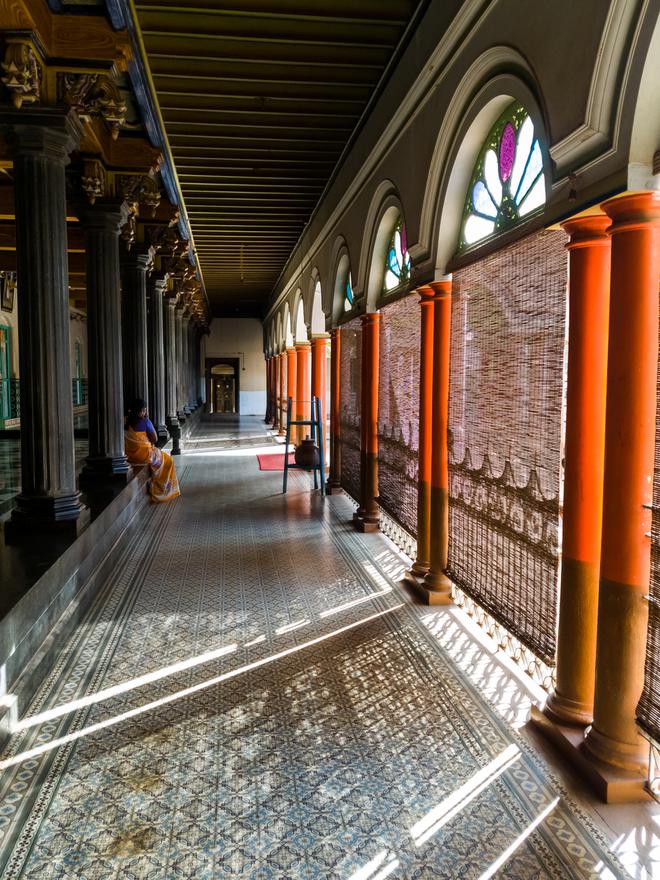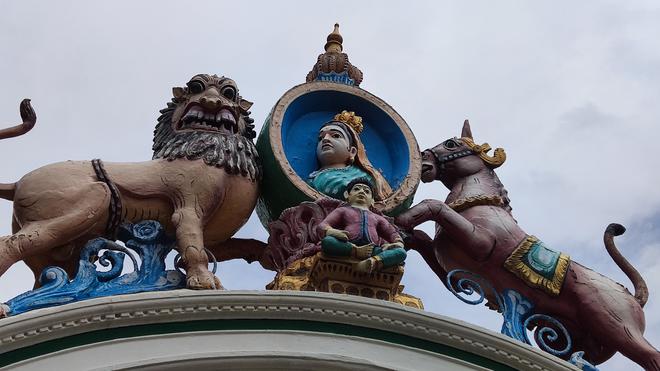I thought I knew the traditional emblems of the foreign-returned in India — Camay soaps, Danish butter cookies and KitKat bars.
Then I went to Chettinad.
There I discovered new symbols of the foreign-returned from 100 years ago, things that did not fit into suitcases as neatly as soaps, biscuits and chocolates.
Burmese teak. Spiral staircases from Birmingham. Delft tiles. Swedish enamel. Venetian glass.
The mansions of Chettinad, many of them over a century old, some art deco, some neo-classical, are bursting with markers of their globetrotting owners. The Chettiars were traders who ventured all around the world but especially to South East Asia. They settled in these villages in Tamil Nadu’s Sivaganga district, and using their new-found wealth built homes that showed off both their prosperity and their cosmopolitanism.
Just the entrance to a Chettinad mansion can be an exercise in map-spotting — doors of solid Burma teak, Belgian mirrors, English floral tiles, and Italian black marble columns.
Sivashankar Solaimalai who works in guest relations at Visalam-CGH Earth, an art deco mansion-turned-boutique hotel in Kanadukathan, the village where his father was born, takes me on a bullock cart ride pointing out the 100-odd mansions that still survive in his village.
Missing tiles
It’s not just Kanadukathan. There are over 70 villages around here, all with the shuttered mansions of the Chettiars. Most are under lock and key, the owners live in Chennai or Singapore or California. The buildings sit there like brightly coloured cakes melting in the hot Tamil Nadu sun.
Some are mired in litigation between a slew of heirs. The families come together occasionally for a big wedding. Sometimes the buildings are opened up for film shoots. Solaimalai shows me one white wedding cake of a building. That one’s been in many Tamil films, he says, usually as “the bad politician’s mansion”. Another palatial building has some English tiles missing. A pattern of pink roses has been painted into the wall to cover up the missing squares. A film crew “took” some tiles as souvenirs, laments Solaimalai.
The calmness of the village with its pond, its temple, its chickens and goats, all point to the sort of never-changing timelessness we associate with Malgudi Days. Yet right in the midst of that are these glorious khichdi mansions — houses that look as if they have been caught in the crosshairs of great currents of change, buildings you’d expect in great trading hubs, not built by local architects in sleepy Tamil villages.

The antique stores lining a lane in the nearby town of Karaikudi are stuffed with the debris of homes that have been demolished — boxes of brightly coloured enamel dishes from Scandinavia and antique tiles from Spain. Huge Burmese teak doors stand propped up against a wall while local hand-carved lion-faced yalis snarl in a corner, and Chinese paintings hang on the wall. A dog sleeps peacefully in front.
It makes me wonder what it is that we bring back from our journeys and what we hope it says about us. Of course, it is often just a marker of status. As schoolchildren, we’d envy those with cousins in America who could bring them real Levi’s while we made do with the Lavis rip-offs. Hindi films back then lampooned the pomposity of the foreign-returned and there was a grain of truth in those caricatures of the foreign-returned who needed to show off their newly-minted phoren accents and duty-free Johnnie Walkers.
Tamil ethos
Perhaps that was true of the Chettiars too when they came back to the wives and children growing up in these homes. Yet, in a time of rising ethno-nationalism worldwide, when we view the other with such suspicion and insist that all answers lie in our own golden age, the Chettiar mansions bear testimony to a world that was somehow more open to the other and could happily incorporate bits of the other to create something new without losing what it had.
The mansions are not like UFOs which landed in the Chettinad countryside instead of Europe. The ethos remains very Tamil. The kitchens still come with the old style aatukal — stone grinders — like all Tamil households. Visalam hotel might have a swimming pool but it has also retained the egg plaster on the walls that the house had when it was built, a technique now long lost. At the entrance, there is a bas relief of the goddess Lakshmi.
In fact, she’s there at the entrance to every home. But as Solaimalai points out, sometimes she comes with foreign-returned accessories.
One home has a pair of British-era sepoys guarding her. In another there is Queen Victoria herself. But this Queen Victoria has a bindi on her forehead putting the local very firmly in the global.

The writer is the author of ‘Don’t Let Him Know’, and likes to let everyone know about his opinions whether asked or not.







